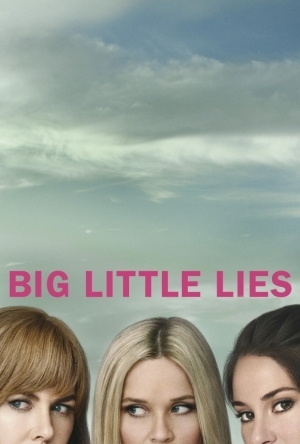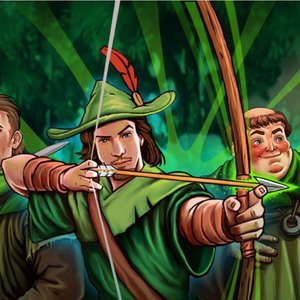
V for Wikipedia
Reference and Education
App
Wikipedia, better than ever—on iPhone, iPad, and Apple Watch. Discover the world and enjoy...

MoviePro : Video Recorder
Photo & Video
App
MoviePro - the most powerful video recording & film making app with innumerable options as seen on...

Forbes Magazine
Business and Finance
App
Truly unique among magazine apps, the Forbes app acts as your gateway to the ultimate Forbes...

Sudy - Sugar Daddy Dating App
Dating, Lifestyle and Social Networking
App
Who is your sugar daddy? Welcome to the #1 matchmaking and dating app for both sugar babies and...

2Screens - Presentation Expert
Business and Productivity
App
2Screens - Presentation Expert is a feature rich document manager and viewer, complete with...

Real Racing 3
Games and Entertainment
App
**#1 Top Free App in over 100 countries** Real Racing 3 is the award-winning franchise that sets a...
Kelly J Tyrrell (3 KP) rated Inspired: Slaying Giants, Walking on Water, and Loving the Bible Again in Books
May 21, 2018
I should start by saying - I filled out an application to be on the Launch Team for this new book, so I received an Advanced Reader Copy from the Publisher.
I first came across Rachel Held Evans when her book A Year of Biblical Womanhood crossed upon my Goodreads page. I thought, "Now there's a crazy idea", and while it was, the writing was not. The writing was wonderful! I followed along to grab Searching for Sunday, too.
So as any good 21st century fan, I started following Evans on Facebook, where I saw polls for naming a new book. A new book?? Yay! Never in my wildest dreams did I think I'd get to be reading it a month in advance of release.
"Bible stores don't have to mean just one thing."
Inspired is largely about the importance of stories. Not just Bible stories , but our own stories, too. Stories like how your Grandpa had to quit smoking to get Grandma to go out with him. Stories like how you met your spouse over $0.25 tacos. Stories like how your great-uncle got kicked out of military school necessitating not one, not two, but FOUR rosaries at his funeral.
There are stories about who we are, where we come from, what we're willing to fight for, and what we've learned along the way. There are stories of good news and bad, and who we make community with. And the Bible is no different. Rather than dissecting all of the stories of the Bible, Evans divides the book into genres of stories. There are Wisdom stories, stories of deliverance, Church stories, and of course, Gospels.
"The good news is good for the whole world, certainly, but what makes it good varies from person to person, and community to community."
This theme of interpretation is recurrent through the whole book. Bible stories, gospel stories, war stories - none of them have one singular meaning. For Evans, growing up in a tradition that took the Bible as literally true and the inerrant Word of God, one singular meaning was not only suggested, but preached everyday. And though I grew up Catholic, and not Evangelical Protestant, I can relate.
Leaving the Catholic faith in my late teens to re-emerge as a Progressive Protestant in my thirties has been an eye-opening experience to say the least. I've never known anyone who takes the Bible literally (or at least if I did, I didn't know it). Not until I started homeschooling did I ever meet a person who actually believed in Creation. I guess what I'm trying to say, is that it has never occurred to me to take the Bible literally.
But I am, overall, an academic person. I love to read, analyze, and over-think everything. But since I did not grow up with the Bible's cast of characters like old friends, I was thirty-years-old before I started attending Bible studies at my local church. Instantly, I was sucked in to the weirdness and messiness of the Bible. Which made me ask - how does one even take the Bible literally?
"The truth is, the bible isn't an answer book. It's not even a book, really. Rather it's a diverse library of ancient texts, spanning multiple centuries, genres, and cultures, authored by a host of different authors coming from a variety of different perspectives...No one has the originals."
You could almost say that God delighted in canonizing inconsistencies, trusting that we could use our [God given] intellect to figure out what it needed to mean.
Because, things change, don't they? A historical, analytical approach to studying the Bible tells us that time, place, and context matter. The Epistles of Paul were not written to us. They were written to the church in Corinth, or Thessalonica, or Ephesus. And by church, I mean incredibly small groups of people, gathered in someone's house, illegally I might add. They weren't written to the 2.1 billion of us, flaunting our religion around the world like we own the place.
Indeed, Inspired was so good, and covered such a rich variety of story types, that if I keep talking, I'm going to ruin it for you. So, I guess I'll leave you with this. If you have ever read the Bible and thought:
...how could God just leave Tamar like that?
...how could God call David a man after his own heart?
...Jesus sure does touch a lot of people he ain't supposed to, what's up with that?
...what's so bad about being a tax collector, anyway?
you should probably read this book. NOT because this book answers any of those questions. It doesn't. It doesn't even try to. Rather, Rachel Held Evans in her Southern mama wisdom, helps remind us that maybe having all the answers isn't actually the answer. Maybe reveling in the magic of the Bible is the Hokey Pokey. Maybe that IS what it's all about.
Daniel Boyd (1066 KP) rated Big Little Lies - Season 1 in TV
Feb 8, 2019 (Updated Feb 8, 2019)
The series opens with some ominous editing and vague hints that a major crime has been committed, which we eventually realise to be a murder. Then we are taken backwards tin time and are introduced to Reese Witherspoon's character Madeline, whom initially comes off as entitled and annoying, but you assume that this is going to have a purpose in her character's arc and she will grow on you. You are wrong to assume that as she is extremely irritating throughout the entire duration of the series, constantly interrupting other characters lines and sticking her oar in during group situations, just for the sake of clinging on to the spotlight and keeping herself at the centre of attention.
Thankfully, Nicole Kidman's character Celeste is less annoying and instead just a bit strange. We see pretty early on that she is a victim of domestic abuse at the hands of her much younger husband played by Alexander Skarsgard. At first this is pretty harrowing and sad to see, but for some reason, - and I don't want to kink shame anyone, - but it seems like she kind of likes it. The third main character we are introduced to is Jane, played by Shailene Woodley who immediately seems like damaged goods.
The "conflict," is then set up. After the first day at school we see a highly unrealistic scene play out as the most insensitive teacher in the world with zero foresight gathers all of the children in her class along with their parents outside the school gates. A girl has marks on her neck from being choked by one of the other kids. The teacher then asks the girl to point out the kid that did this to her (in front of the entire class and their parents!) and she points to Jane's son Ziggy. The boy denies any wrongdoing, but the girl who has been hurt's mother, (played by Laura Dern, whom I normally really like,) is a horrible, bitter bitch who responds to the situation by berating the accused boy in front of everyone, degrading his mother in the process for defending her child and not "making," him apologise.
*Insert Peter Griffin "Oh my God, who the hell cares?" meme here.*
Yeah, this is the kind of schoolyard bullshit that this show expects us to treat as a life or death issue. The whole thing is full of non-issues and petty whines centred around 'he said/she said,' nonsense. Then we are supposed to relate to these immature, venomous parents who don't do anything to help the situation whatsoever. Meanwhile the show treats domestic abuse, - something that is a very real and threatening issue, - as just a weird kink in this oddball couple's relationship.
It is clear that all of these parents clearly care far more about self-image than they do about their own children, which makes all of them extremely gross and off putting as characters. They constantly make up excuses as if to try and justify themselves and claim that the bitchy, conniving choices that they make towards each other is for the sake of their kids, when it is clearly just to one up each other in pathetic, petty social warfare and childish beefs.
Website theodysseyonline.com has an article called, '13 Reasons Why Big Little Lies Is So Powerful.' I truly fail to see what is apparently so powerful and ground-breaking about this series. I'm not even sure what it is trying to say; that domestic abuse and rape are bad things done by evil people? Wow, what a brave and unique stance to take! I also resent the idea that everyone that says anything remotely negative about this show is a women-hating misogynist. I consider myself a left-leaning liberal and a feminist, I am a strong supporter of equal rights amongst all genders and races and I do regular work for a women's mental health charity, but I can still spot an overrated, hollow waste of 7 hours when I see one.
Overall, even though this season only last 7 episodes, it is not worth your time. After watching the first 2 episodes I thought about giving up on it, but then I thought about all of the glowing reviews and thought, 'no, surely this must get better.' Let me save you seven hours of your time; it doesn't. This is a melodramatic glorified soap opera that doesn't handle any of the issues that it tries to tackle well and it is filled, - to the point it is bursting at the seams, - with small scope issues and minor annoyances treated as life threatening scenarios, all the while brushing off the genuinely scary and potentially life threatening scenario of domestic abuse.
Purple Phoenix Games (2266 KP) rated Robin Hood: Hero of the People in Tabletop Games
Jun 13, 2019
Disclaimer: This review is for a Kickstarter preview. We are not being paid for this preview, but we were sent the game from the designer. Components and rules may be changed before the product and project is finished. -T
As this game is not yet in full production, I will paraphrase the rulebook here for you so you can get an idea of how the game plays. Then I will give my opinions on this little card game.
Robin Hood: Hero of the People is a one-player card game that is played over three phases. To win the game you must have all Merry Men and Maid Marian recruited and active, while the bounty on your head is less than 500. You lose by seeing the bounty at or above 1,000 or by playing through the entire deck of Story Cards without winning. You may set the difficulty level by choosing how much you would like the bounty to start at before you begin play (100, 200, or 300). The rulebook instructs you how to setup the game using several piles of cards to create the play area. Deal yourself three Loot (skill) cards and the game is on!
The first phase of the game is Robbing from the Rich. During this phase you draw three (or more depending on other cards currently in play) Loot cards from the big deck. These cards consist of different skills to use later – like Archery, Strength, Swords, etc. You will also find Gold and Influence cards. These Loot cards are needed to recruit Maid Marian and all the Merry Men, as well as used for negating powerful negative Story Card effects in the third phase of the game. Once you have drawn your Loot cards, you may play up to three of them into your Inventory in front of you (unless a card instructs you otherwise). Only your cards in the Inventory will be used to recruit and rescue Merry Men, or be affected by Story Cards.
You have placed your skills and bargaining cards in the Inventory. It is now time to use them to recruit your Merry Men! The second phase is the Actions phase. You have several options of actions to take on your turn, but you may only take one action. One option is to recruit Merry Men characters. Each character card begins the game face-down in a grid. The card backs show the recruitment costs (paid in skills) for each. They all have different skill cost combinations on each back so you must choose your Inventory cards carefully in the first phase. During the game some characters may become jailed through the Story Cards. Also on the backs of the character cards are the costs to rescue your friends from jail, and the costs are different than the recruitment costs. This throws a wrench into your plans as you are trying to recruit and protect all your Merry Men, just to have them thrown in jail and made unavailable to you. Curse you, Sheriff of Nottingham!
Also during this phase, in addition to recruiting and rescuing your allies, you may purchase King Richard cards, Sherwood Forest cards, or decrease your bounty. King Richard cards are very very costly (requiring up to nine skills to purchase!) but also very powerful and very helpful to your cause. There are three of these in the game and when you have used one you must discard it out of the game. Do you have an abundance of skills and Loot cards to use? Would you like to protect your Merry Men from becoming jailed? Well during this phase you may also purchase Sherwood Forest cards to begin building a hideout. It costs two Strength skills, but once you have acquired all six Sherwood Forest cards, most of the Merry Men are protected from being jailed. Huzzah! The final option you have in this phase is spending any three Loot cards from your Inventory to reduce your bounty by 100.
The third and final phase is the Story Card phase. During setup you are instructed to separate this deck into two piles, shuffle them independently, and place the Story Cards in set one on top of the story cards in set two. Set one cards are annoyances that can bleed you of skill cards or raise the bounty on your head. Annoying! The cards in set two are far worse, as they will jail your unprotected Merry Men and set you back further from victory… also whilst raising your bounty. Super annoying!! Curse you again, Sheriff!!
If no win or lose conditions have been met at this time, you will return to the first phase with this additional rule: switch your active character (you start the game with Robin Hood) with another character you have recruited in the grid. Each character has a different special ability to be used on your next turn as well as a different set of skills printed on the face that you may use as discounts for recruitment, rescues, and purchasing of King Richard and Sherwood Forest cards. Example: Much the Miller shows 1x Sword and 1x Strength. You can use his skills as a discount to purchase a Sherwood Forest card by spending just one Strength card from your Inventory. Time to stick it to the Sheriff!
So how does it all shake down? Overall I say the game is really good. It is unfinished, and has not yet made it to Kickstarter, and I suspect that has something to do with any drawbacks I have experienced. Upon reading the provided rulebook and attempting Game 1, I had several rules questions. Rodney was quick to provide answers and it made the game so much more playable and enjoyable. Since it is a solo game only, every decision you make directly impacts how the game is played (duh, right?). There’s nobody else to mess with your plans, nor help them succeed. There’s no AI or ghost player. Just you versus the game. I have played this many times now on different difficulty levels and have won and lost on each. It would seem balanced, however…
There are a few strategies I attempted to use on my different plays to see how they might add to the complexity and change the results. I noticed that I won more when I completely ignored Sherwood Forest and King Richard’s cards. Yes, one of the King Richard cards reduces the bounty by quite a bit, and that’s just in one turn, but the cost is so mighty that I rarely found them enticing enough to pull the trigger. Same goes for Sherwood Forest. Though the cards cost a paltry two Strength, I found that I needed those Strength cards to recruit or rescue my Men and could not justify spending two per card (and six total cards to build the hideout) for that protection. Your play style may vary, and I am itching to play again to try new things out. Maybe I’m wrong about Sherwood Forest. I think that’s a really great trait for a game – to have its players thinking about different strategies while not playing, and just waiting for when they can play again.
I have to say, I am very excited to see this go to Kickstarter, and to learn what Rodney has in mind for improvements to the components, or rule tweaks, and the almighty stretch goals. I might be backing this one, even though I have a great working version of it now…



